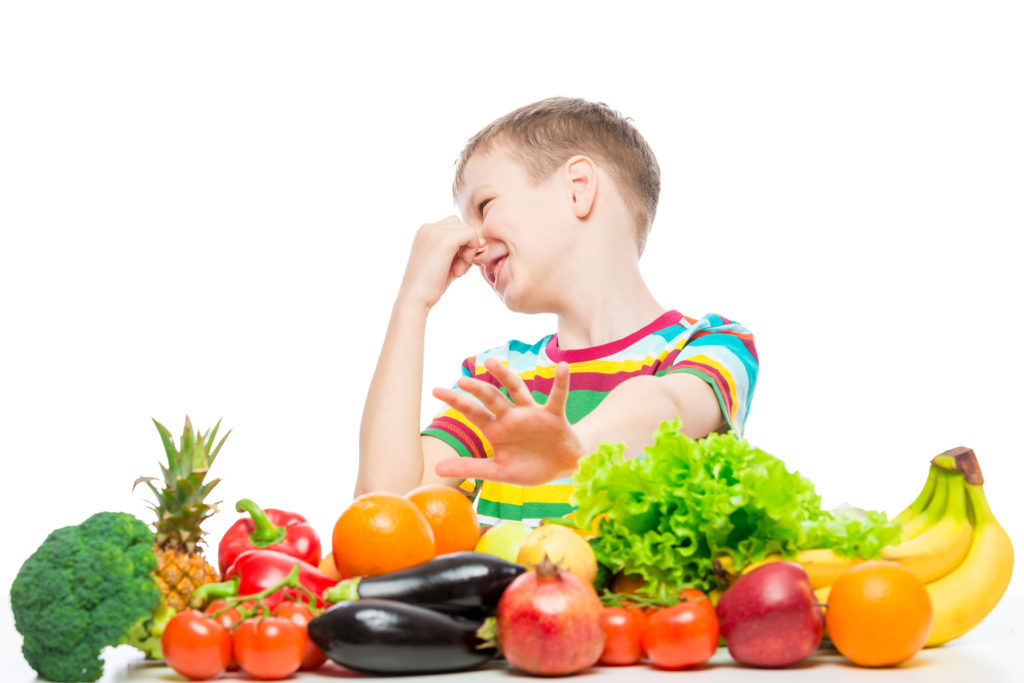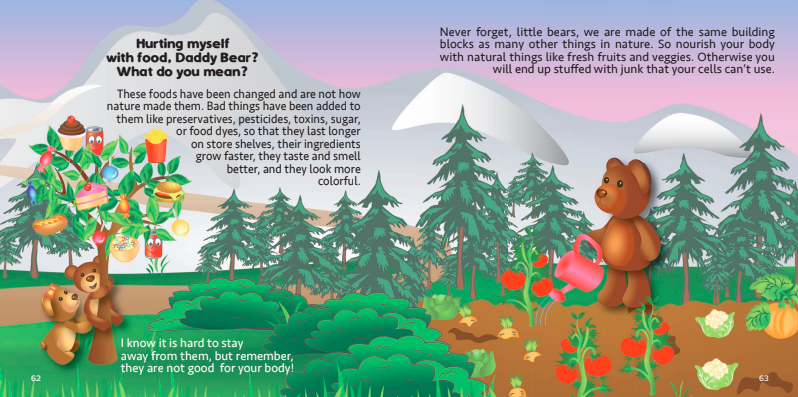Clara Marie Davis wrote a study in 1939 which is likely the world’s longest, most detailed and most ambitious dietary experiment entitled The Self-selection of Diets by Young Children (1).

C. Davis described what happens when children have a choice between 33 available healthy foods. They get to choose which ones and how much they want to eat. When this study was conducted doctors prescribed with great detail what and when and how much a child should eat in order to be healthy. Children often reacted to these doctor-ordered diets by shutting down and refusing to eat anything. Davis let children choose for themselves among these healthy foods because she suspected that children’s bodies instinctively knew best what the individual child should eat. None of the infants had the same diet; not one diet was the predominant cereal and milk diet, with smaller supplements of fruit, eggs, and meat that is commonly thought proper for this age. Yet, she saw that all the infants turned out to be well-nourished and healthy children. Body wisdom or instinct was the most likely explanation for this observation.
Hunger is a message from the body
But where does the signal come from? Hunger is partly controlled by a part of your brain called the hypothalamus, your blood sugar (glucose) level, how empty your stomach and intestines are, and certain hormone levels in your body. Ghrelin, for example, is known as the “hunger hormone” because the stomach releases it when the body needs more food.
So, when we are hungry, we should listen to our senses, such as smell and taste, and pay attention to what we desire, the pleasure we get from eating it, and the satisfaction once we are finished. If the body is already well-nourished, it may feel like we need to go on a cleansing, plant-based diet. If we have been cleansing already, the body may be ready for more nourishing foods again (2). (See my previous post Plant food or animal food? – that is the question…)
The problem today is that many people’s body instincts are compromised by the processed junk foods we ingest. Unnatural, processed foods not only cause inflammation in our digestive tract, they also feed and therefore select the “bad” bacteria to populate our microbiome. (See my previous blog The continuum of life). These harmful microbes then send signals to our brain making us crave more of the foods they need. The inflammation causes our gut wall to become leaky; toxic substances access the bloodstream and can result in all kinds of symptoms, such as abdominal pain, bloating, burping, reflux, diarrhea, constipation, headaches, fatigue, joint pain, brain fog, asthma, eczema, and allergies.
If your child’s digestive tract has a compromised gut flora and s/he refuses to eat real whole foods, you might start by explaining what is going on inside his or her body.
Our body is made of cells (3)



Tell your kids: “If you feed your little cells first, they will help you stay healthy when you need their help. You want to make sure to create a strong team for yourself. It’s ok to have a treat every once in a while, but make sure you feed your cells first.”
If your child is an extremely picky eater, imbalances in gut flora and/or food sensitivities may be the reason for it. The goal is to change the population of microbes in their gut little by little, and also to heal the gut lining. This will take some time and commitment, but it is possible.
11 tips to help your picky eater
- Work on introducing new foods before eliminating their comfort foods.
- Find some recipes where you can easily “hide” veggies. E.g. blend a handful of spinach into a smoothie they already like; add pureed broccoli and cauliflower into a spaghetti sauce.
- When they are hungry, don’t offer processed snacks. Have your fresh fruits and veggies ready, or even offer a full meal. If your child is hungry when a new food is introduced, s/he is more likely to accept it.
- Even if you know your child won’t eat the fruits and veggies you are serving, put it on their plate.
- Keep offering new foods and those your child did not like before. Just because they refused it once, doesn’t mean you should stop offering it. It can take several times before they accept to taste a new food.
- Be a good role model, eat fresh fruits and veggies regularly. If they see you do it, they will get used to it and eventually try it too.
- Toddlers like foods arranged in eye-catching ways. Be creative!
- Let them participate in preparing their own healthy meals. E.g. prepare pizza dough and let them make their own pizza choosing from healthy toppings.
- Serve unfamiliar foods, or flavors children tend to dislike at first (sour and bitter), with familiar foods toddlers naturally prefer (sweet and salty).
- One at a time, introduce fermented foods like kefir, yoghurt (it can be non dairy), miso, sauerkraut, kimchi, kombucha. They are rich in natural probiotics and help create a healthy gut flora.
- Start introducing bone broth in your child’s diet, it is excellent to help heal the gut lining.
It is really important that we gradually and permanently eliminate all processed junk foods. Otherwise, our healthy gut flora will get compromised again, and the bad cravings will come back.
Dealing with picky eaters can be very frustrating and challenging. It will take time to change your child’s diet, but in the long run it will prevent many chronic health issues, many trips to the doctor’s, and many doctor’s bills!
(1) https://www.ncbi.nlm.nih.gov/pmc/articles/PMC1626509/
(2) Dr. Natasha Campbell-McBride MD, Vegetarianism Explained,
Medinform Publishing (May 17, 2017)
(3) Agnes Deglon, Hey Buddy, I’m Your Body. Acorn Publishing (June 15, 2017)




